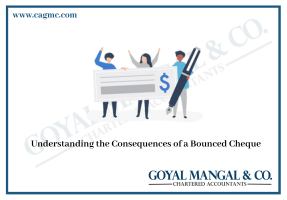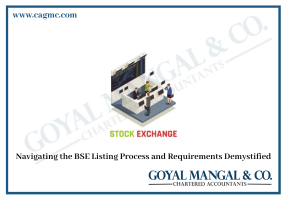 A small and medium-sized enterprise (SME) is no different than a large corporation, except that it is one that generates revenues, and assets, and employs fewer people. Small and Medium-Sized Enterprises (SMEs) are defined in every country differently, and each has its own rules and regulations about what constitutes an SME.
A small and medium-sized enterprise (SME) is no different than a large corporation, except that it is one that generates revenues, and assets, and employs fewer people. Small and Medium-Sized Enterprises (SMEs) are defined in every country differently, and each has its own rules and regulations about what constitutes an SME.
Overview
The Micro-Small and Medium Enterprise (MSME) sector in India is a unique mix of enterprises using conventional as well as modern technologies at the national level relevant information on the MSME sector on various parameters like production, technology, employed, types of fuel used, and their consumption, energy saving potential, growth scenarios, etc. are not readily available. This limits the design of appropriate policy instruments to ensure sustainable growth of the MSME sector.
To address this barrier, the Bureau of Energy Efficiency (BEE), Ministry of Power, Government of India, has initiated an ambitious project of mapping the energy-intensive MSME sub-sectors across the country.
MSMEs stands for micro, small and medium enterprises. A small and medium-sized enterprise (SME) is no different than a large corporation it is one that generates revenues, assets, and employees few people than MSMEs. Small and medium-sized enterprises (SMEs) are defined in every country differently, and each has its own rules about what constitutes an SME.
Certain criteria should be fulfilled as a part of the ranking process including the size of the company, as well as the industry in which the company operates. In business finance, financing small and medium-sized enterprises is an important function of the market. It is one of the major ways in which capital is provided, acquired, and cost for the different types of companies available on the market.
Small and Medium Enterprises (SME)
Small and Medium Enterprises (SMEs) are common in India because the country possesses a highly valued demographic dividend. As per section 7 of the MSME Act, 2006, Small and Medium enterprises are investments in these sectors that are used to differentiate them.
A minimum amount of 1 crore is needed and a maximum amount of 10 crores is needed to invest in the small enterprise sector, with a turnover of a minimum of 5 crores and a maximum of 50 crores. For medium-sized enterprises, investment criteria range from INR 10 crores to INR 50 crores, while turnover thresholds range from INR 50 crores to INR 100 crores.
Importance of Small and Medium Enterprises (SME)
SMEs play a vital role in the economic development of our nation. SMEs contribute to jobs creation in developing countries because of the following reasons:
- Production via labor-intensive techniques: Producing goods and services in a more labor-intensive manner than much larger enterprises, thus generating more employment and distributing income more equitably.
- Providing more opportunities: SMEs provide more opportunities in an agricultural-based economy than any other enterprise, as they encompass simple and value-added processes in work.
- Promote entrepreneurship: SMEs contribute and support several entrepreneurial activities.
- Development of a strong economic system: By leveraging the strengths of small and large enterprises, SMEs improve the development of productive capacity and create strong economic systems.
Small and Medium Enterprises (SME) Loans
The loans that banks and other lending financial institutions offer to small and medium-sized enterprises are known as SME loans. There are various schemes that are initiated by banks and financial institutions, especially for SMEs with terms and conditions being different for every bank. Female entrepreneurs may have a special scheme. Many of these loans do not require collateral. The following banks offer different types of schemes:
- State Bank of India (SBI): SME loan schemes offered by the SBI are Cotton Ginning Plus, E Dealer/Vendor Finance Scheme, etc.
- HDFC Bank: SME loan schemes offered by the HDFC are Working Capital Finance, Working Capital for Contractors, Working Capital for Transporters, business loans, etc.
- Axis Bank: SME loan schemes offered by Axis Bank are MSE Power, Services Power, SME Power, B Business MPower Term Loan, Power Rent, etc.
- ICICI Bank: SME loan schemes offered by ICICI Bank are cash credit/overdraft, export credit, and term loans.
The Benefits of Obtaining an SME Loan
The following are the benefits of availing of SME Loans:
- SME loans include payback terms ranging from 12 months to 60 months.
- SME loans do not require collateral.
- Shorter approval time and a simple online application process.
- There are a few paperwork requirements.
Eligibility Criteria for applying for Small and Medium Enterprises (SME) Loans
Though lending institutions’ precise qualifying requirements may differ, they nonetheless follow a set of basic guidelines for SME loans. Please review the lender’s requirements before applying to decrease the likelihood of rejection.
The loan application must serve a commercial goal, such as acquiring machinery or raw materials, obtaining working capital, promoting products/services, growing the employee base or product line, entering a new geographic region, and so on.
- Age: The candidate must be between the ages of 25 and 55.
- Experience: The applicant should have at least three years of business experience.
- Proof: At the very least, the applicant must present the previous year’s company Income Tax Returns.
How Do You Apply for SME Loans?
You must acquire the SME loan application form from the lender you have chosen to apply for an SME loan. The following fields, however, can be expected.
- The company’s name
- Incorporation date
- The company’s registered address
- The company’s operational address
- The company’s phone number and e-mail address
- Industry classification
- Account Number for Life (PAN)
- GST identification number
Many lenders provide an online application portal for SME loans. All you need to do is go to the lender’s website and look for the SME loans area. After reviewing the loan information and eligibility requirements, click the ‘Apply Now option. Provide all requested information as well as copies of any required papers to apply for the loan. Within the allotted wait period, a bank representative will contact you about your inquiry.
Top government SME Loans schemes in India
The following are the government’s best SME loan schemes:
- Pradhan Mantri Mudra Yojana (PMMY): Pradhan Mantri MUDRA Yojana (PMMY) is a scheme launched by the Hon’ble Prime Minister on April 8, 2015, for providing loans up to 10 lakhs to non-corporate, non-farm small/micro enterprises. These loans are classified as MUDRA loans under PMMY. These loans are given by Commercial Banks, RRBs, Small Finance Banks, MFIs, and NBFCs. Under the aegis of PMMY, MUDRA has created three products namely ‘Shishu’, ‘Kishore’, and ‘Tarun’ to signify the stage of growth/development and funding needs of the beneficiary micro unit/entrepreneur and also provide a reference point for the next phase of graduation/growth
Indian citizens can apply for the loan if they are engaged in any field whose credit demand is below INR 10 Lakhs or a non-farming sector, along with income-generating enterprises like manufacturing, service sector, or any other similar field. A repayment period of three to five years is involved, with an interest rate of 7.3% per annum. Applying for the same can be done online via the portal.
- SIDBI Make in India Soft Loan Fund for MSMEs (SMILE): To promote MSMEs to take part in the ‘Make in India’ program, the Government of India has established the SIDBI Make in India Soft Loan Fund for Micro Small and Medium Enterprises (SMILE).
- Stand Up India: This loan is an easy loan for women and backward classes. Stand-Up India was launched in 2016 to provide loans to SME businesses run by women and individuals in the SC/ST categories.
Conclusion
The role of micro, small and medium enterprises (MSMEs) in the economic and social development of the country is well established, the sector accounts for 45% of the manufacturing output and 40% of the total exports of the country. A small and medium-sized enterprise (SME) is no different than a large corporation it is one that generates revenues, assets, and employees few people than MSMEs. Small and medium-sized enterprises (SMEs) are defined in every country differently, and each has its own rules about what constitutes an SME.







